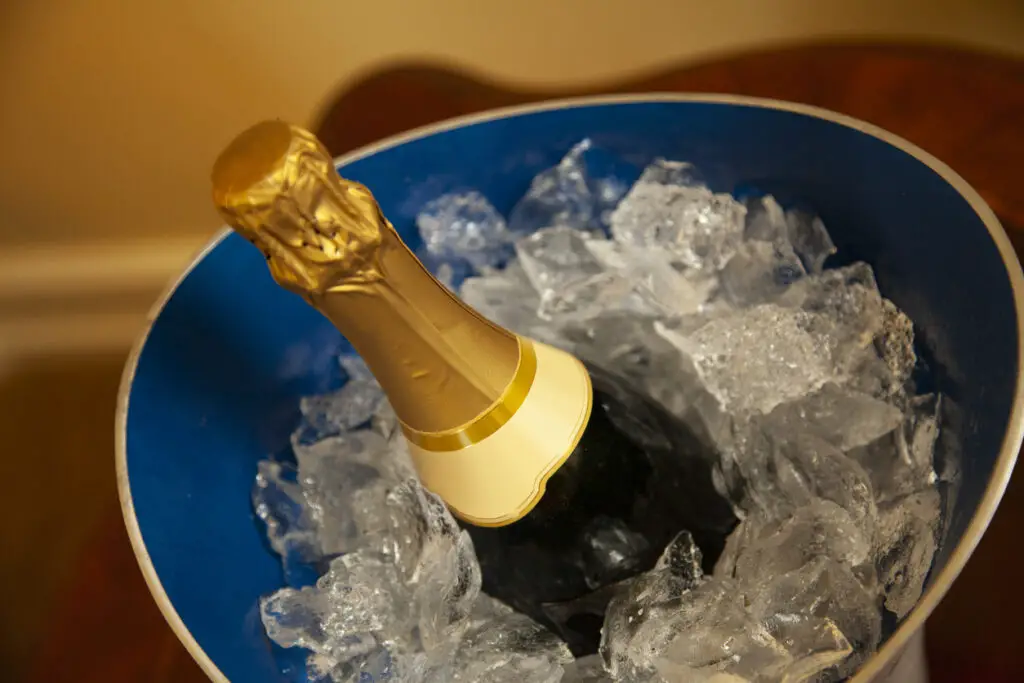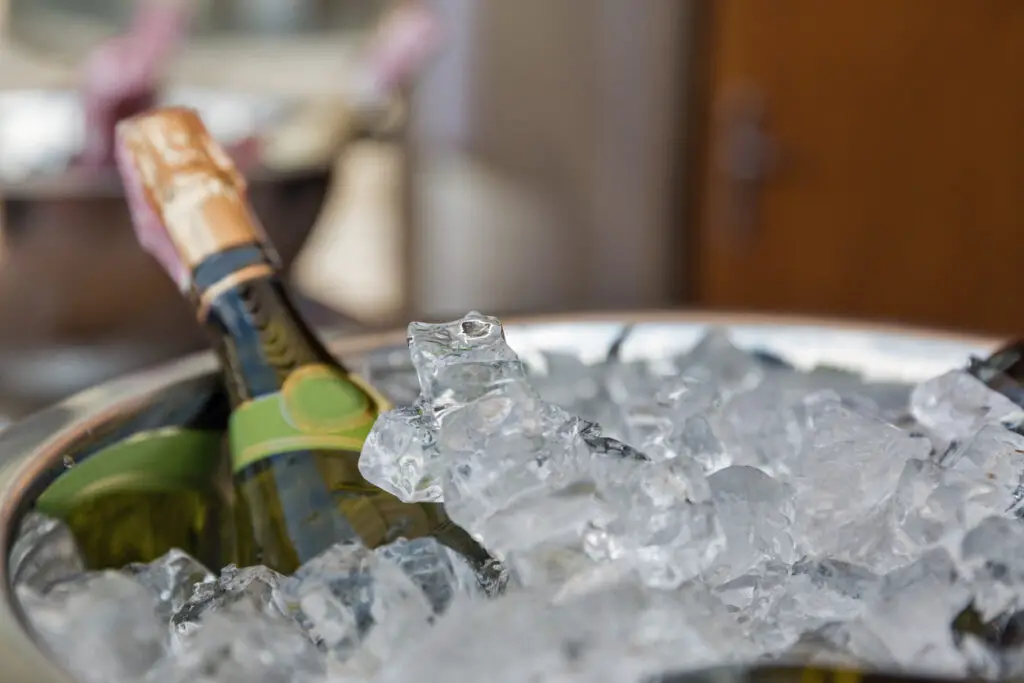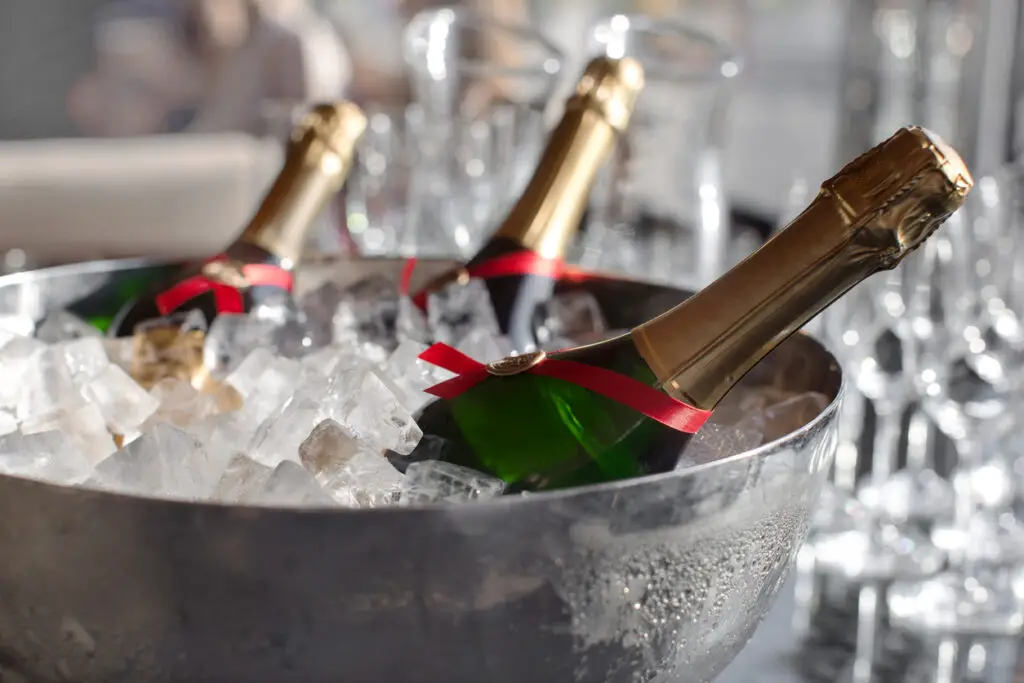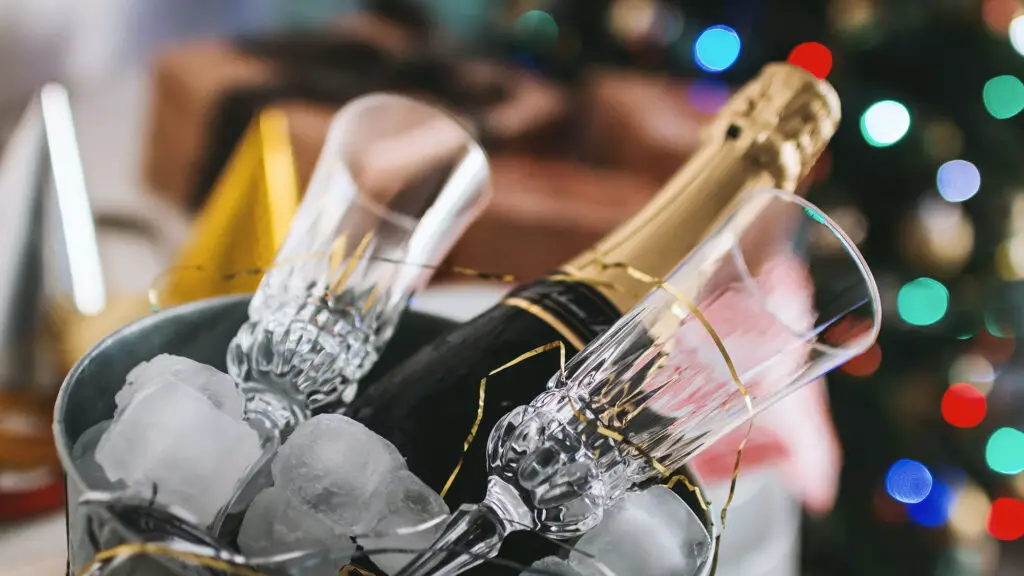Special occasions often call for sparkling wine. You seek out the perfect bottle to celebrate with. Yet, understanding all the terms that label bubbly can be daunting. What is the difference between Cuvée vs Brut?
Both Cuvée and Brut are used to describe styles or characteristics of a wine. They are used most often to describe sparkling wine. Generally speaking, Cuvee conveys quality or that specially selected grapes were used. Brut is a classification of sweetness levels identifying the wine as dry or not sweet.
Cuvée vs Brut was originally coined in French, but have spread to be used in many other wine regions all over the world.
Terms describing wine are sometimes not as clear-cut as they seem. We are here to straighten it all out for you.
What Does Cuvée Tell you about a Wine?

Derived from a French word meaning tank, Cuvée can tell you a few different things about a bottle of wine. It is used for both sparkling and still wine. It’s where we will start with our analysis of Cuvée vs Brut.
It is often used by producers to market their wine as higher quality even among other versions of their own wines. While this can give you a hint that it could be a great wine, the term is not regulated. Finding Cuvee on the label will not guarantee that you are purchasing a superior product.
Author Note: You may also find Cuvee Speciale or Tête de Cuvée on a wine label to emphasize that it is a special, select, and higher quality.
Cuvee is often used to relay that the wine was made from a special blend of different grapes. This is applied to sparkling and still wines.
Found on single varietal wines it denotes that it was intentionally selected from particular barrels or vats. Vintners sometimes handpick certain portions of wine that stand out as exceptional to them.
Champagne and some other sparkling wine producers will list Cuvee to indicate the most desirable juice was used. By gentling pressing grapes and separating the juice that runs off first winemakers collect the best juice for Cuvee wines made in the traditional Champagne method or Methode Champenoise.
What Does Brut on a Wine Label Mean?
In French, Brut means dry, raw, or unrefined. The term is used in reference to the natural state Brut wines are made in without adding sugar dosage.
It is a way to classify how sweet it is. Brut wines are dry with no perception of sweetness.
Brut is the most common term used for dry sparkling wine, but there are two types that are even dryer called Brut Nature and Extra Brut. Unless you have an extremely sensitive palate you will be hard-pressed to tell the difference.
Do not let the labels fool you. Wines called Dry are actually slightly sweeter than Brut.
What are the Sweetness Classification Levels?
There is an endless list of terms that are put on a wine label to convey how a bottle of wine was made or how it tastes. Sparkling wines are no different, which is where Cuvée vs Brut comes in.
One of the most notable traits of sparkling wine is how sweet it is. People are very opinionated on what they like best. The good news is that there is a type for every taste preference. So how are you supposed to know one bottle from the next?
Producers solved this by creating terms on a scale from bone dry (not sweet at all) to syrupy sweet. From driest to sweetest these are Brut Nature, Extra Brut, Brut, Extra Dry, Dry, Demi-Sec, and Doux.
You can separate them by how much residual sugar they have in them. To get a clearer understanding of what that means keep in mind that coke has 120 grams per liter. Or you could count in Hersey’s kisses which have 2.5 grams sugar and 22 calories—just remember that the sugar is not concentrated in a bite when it comes to wine.
For wines made in the Champagne method, the sweetness is determined during the liqueur d’expedition or dosage step. Sparkling wine is naturally very acidic so producers add grape must or sugar to smooth out the zinging tartness.
Maybe you are watching your belt line. Perhaps you simply have a strong preference for or against sugary flavors. Understanding the terms that classify sparkling wines will allow you to choose a wine you will enjoy.
Below We Outline the Levels from Driest to Sweetest:

Brut Nature, also called Brut Zero, is the driest type of sparkling wine. It does not go through the dosage process and no sugar is added.
Top Tip: These will taste bone dry and have zero to three grams of residual sugar per liter of wine. If you are a calorie counter this means 91 to 93 calories per five-ounce serving.
Extra Brut is next in line holding zero to six grams of residual sugar per liter. This bumps your calorie intake up a notch at 91 to 96 calories per five-ounce serving.
Brut sparkling wines are the most abundant type. You likely will notice these first when you scour the wine shelf for your celebration bubbly. Even though it is the third on the list you will not be able to taste and sweetness.
With zero to twelve grams of residual sugar per liter, a five-ounce glass of Brut sparkling wine will cost you between 91 and 98 calories.
Extra Dry or Extra Sec is an off-dry version of sparkling wine. This type tastes slightly sweet and has twelve to seventeen grams of residual sugar per liter.
Your calorie count for Extra Dry comes in between 98 and 101 calories per five-ounce serving.
Dry sparkling wines will deceive you by their name. Also called Sec or Secco, it tastes a bit sweet with seventeen to thirty-two grams of residual sugar leaving you with 101 to 11 calories per five-ounce serving.
All styles from Dry to the sweetest go through the dosage process during winemaking where grape must or sugar is added.
Demi-Sec styles of sparkling wine will taste noticeably sweet but not overpowering. It contains Thirty-two to fifty grams of residual sugar per liter putting your five-ounce glass at 111 to 121 calories per five-ounce serving.
Doux is the sweetest type of sparkling wine you can find. It is rare to come across a bottle of Doux because consumers today trend towards dryer wines.
This saccharine-filled wine has fifty or more grams of sugar per liter and calories that reach beyond 121 per serving.
How To Choose Between Cuvee and Brut?
There are three factors to consider when choosing between cuvee vs. brut; personal preference, occasion, and budget. The scale above describes the various differences between each but both are delicious!
When it comes to taste and texture, the cuvee provides a rich, creamy texture often with a fruity aroma. Versus a more crispy, dry taste that you would get with the brut. If you’re still not sure you could compare preference of red and white wines. Do you like dry red wines? Or most smooth light bodied wines like a pinot noir? If you enjoy the drier wines that opt for the brut first.
When it comes to the occasion, cuvee vs brut will once again sway. If you’re participating or hosting a wedding, anniversary, graduation, or any special celebration than cuvee will be your best choice.
Although Brut is more versatile, it’s often used for more general gatherings or party’s. The choice comes down to matching the elegance of the event with the appropriate cuvee vs brut and the quality thereof.
The final consideration is the budget available. Cuvee is typically more expensive than brut. This is due to the higher quality ranges you will find with various cuvee options. Compared to the brut which is a little more affordable simply because it is more accessible / available. If you want to really get the best of the best you can get vintage versions of either cuvee or brut, providing a more complex flavor profile but also a heavier hit on your wallet.
Names of Sparkling Wines
We know sparkling wine refers to any wine that has bubbles regardless of region of origin. There are many subcategories and other terms that can be useful to know.
French sparkling wines from the region of Champagne are the only wines that can legally call themselves by that name. There are special growing and production rules and in particular that it has to be made in the traditional method.
Prosecco is Italy’s version of sparkling wine. It is mostly found in the Veneto region. Spain calls their sparkling wine Cava.
Other Sparkling Wine Terms to Know

Blanc de Blanc means the sparkling wine is made exclusively with white grapes. In Champagne that means the wine is composed 100% Chardonnay.
Blanc de Noir tells you the wine is made only with red grapes. Winemakers press the juice from the skins with minimal contact to prevent the skin’s red color from staining the white juice.
Non-Vintage or NV, sparkling wines are made by blending grapes from more than one harvest (more than one year). Most wines from Champagne are non-vintage.
Vintage refers to sparkling wines that are made from grapes harvested in a single year. The year will always be labeled on the bottle.
Grand Cru is a wine that came from the highest quality vineyards.
Cremant is a category of sparkling wine that contains fewer bubbles. These wines are light and fruity with just a slight bit of fizz.
Frizzante means a wine that is lightly sparkling or semi-sparkling. The term originated in Italy and describes the strength or amount of bubbles.
Spumante is another Italian term meaning sparkling wine. It has full fizz.
Perlage is a French term for bubbles.
Conclusion
Next time you find yourself scratching your head trying to pick out a bottle of sparkling wine remember a few key things we’ve covered here.
Author Note: Both of the terms Cuvée and Brut are used to describe styles or characteristics of a wine. They are used most often to describe sparkling wine.
Generally speaking, Cuvee conveys quality or that specially selected grapes were used. Brut is a classification of sweetness levels identifying the wine as dry or not sweet. We hope you enjoyed this article on Cuvée vs Brut.
To living a full-bodied life,
Wesley

